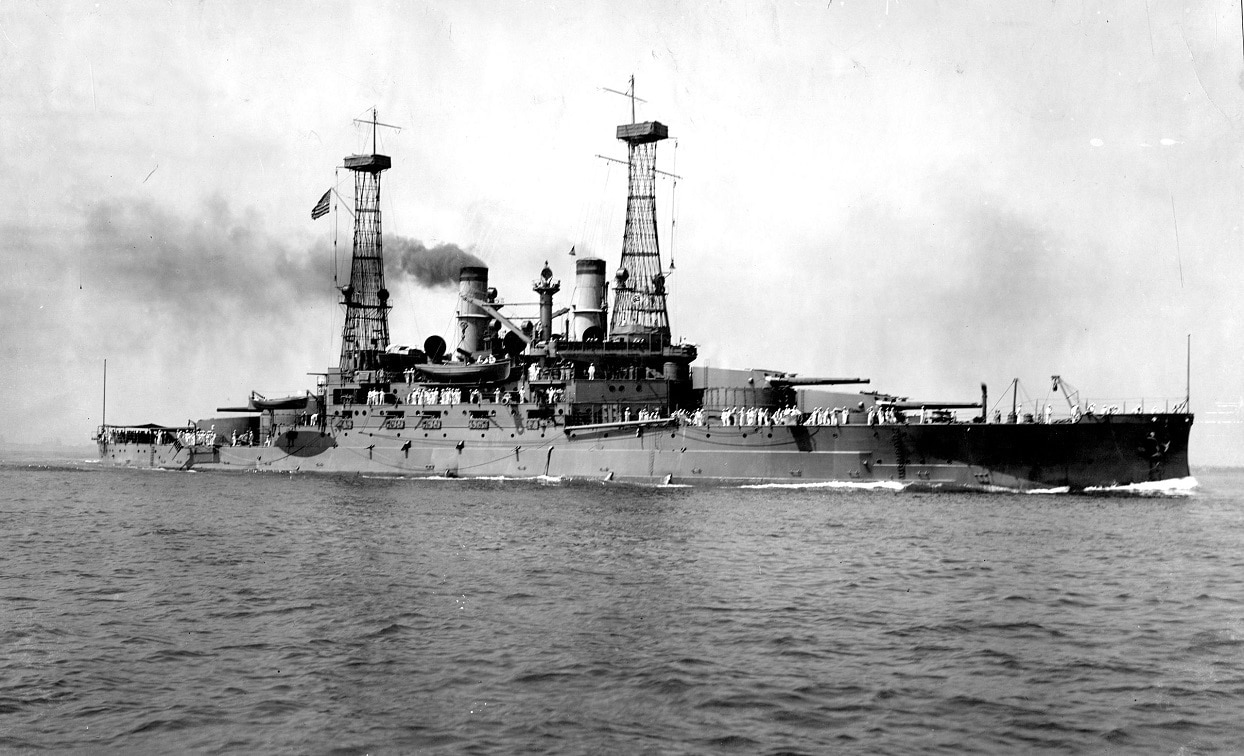The Royal Navy’s HMS Dreadnought, which was launched in 1906, had such an impact on naval design that she essentially made all previous battleships obsolete. However, often forgotten is the fact that the United States Congress had already authorized the U.S. Navy to construct a new class of warship whose capabilities far outstripped most of the world’s older battleships.
Designed before Dreadnought, the South Carolina-class battleships should be seen as a true precursor of future battleship design – featuring an “all big gun” armament carried in center-line superimposed turrets. However, USS South Carolina (BB-26) and her sister ship USS Michigan (BB-27), were constructed at a more leisurely pace and appeared only four years after Dreadnought was in service. While some naval historians have suggested that the building of Dreadnought was a mistake, as it threw away the Royal Navy’s massive lead in the number of battleships – it could be argued that the arrival of South Carolina would have still caused the Royal Navy’s lead to have been diminished anyway, while it would have lost the prestige of developing a new type of capital warship.
All-Big Guns
The South Carolina-class was to not only be the U.S. Navy’s first “all-big-gun” battleship, but the class offered many refinements that may have been seen to improve on the Dreadnought, even though the American warship had been on the drawing board first. While Dreadnought had five twin-barrel 12-inch gun turrets, three on the center line, its two aft turrets were not superimposed. The South Carolina-class by contrast had the four 12-inch gun turrets along her center line and those turrets were able to “superfire” over one another. That would have allowed all eight guns to fire at either beam or even allow for an eight-gun broadside port or starboard.
At 17,900 tons (18,186 tonnes), the Royal Navy’s HMS Dreadnought was larger than the 16,000 ton (16,256 tonne) South Carolina-class, and the British vessel also had turbine engines, which gave her an impressive top speed of 21 knots. The U.S. Navy vessels utilized expansion engines, which provided a top speed of just 18.5 knots – still on par with the older American battleships, yet too slow to allow them to operate with the later dreadnoughts. That slower speed contributed to the relatively short careers of BB-26 and BB-27.
In fact, because warship design was evolving at a blistering pace, the South Carolina-class was almost obsolete by the time they entered service. Both USS South Carolina and USS Michigan were assigned to the U.S. Atlantic Fleet and together took part in the U.S. occupation of Veracruz in 1914 during the Mexican Revolution.
The two battleships saw service during the First World War, and each suffered an unfortunate mishap in 1918. While on a training cruise in January Michigan was struck by high winds, which caused her forward cast mast to collapse, killing six sailors and wounding 13 more – and in September, South Carolina lost her starboard propeller. However, both ships were able to serve in the efforts to repatriate American soldiers after the war.
Used as training ships after the war, the ships were listed as older vessels that were to be disposed of per the terms of the 1922 Washington Naval Treaty. Both were stricken from the navy register and scarped in 1924 at the Philadelphia Naval Yard – marking the end of the U.S. Navy’s first dreadnoughts.
Peter Suciu is a Michigan-based writer who has contributed to more than four dozen magazines, newspapers and websites. He regularly writes about military small arms, and is the author of several books on military headgear including A Gallery of Military Headdress, which is available on Amazon.com.

